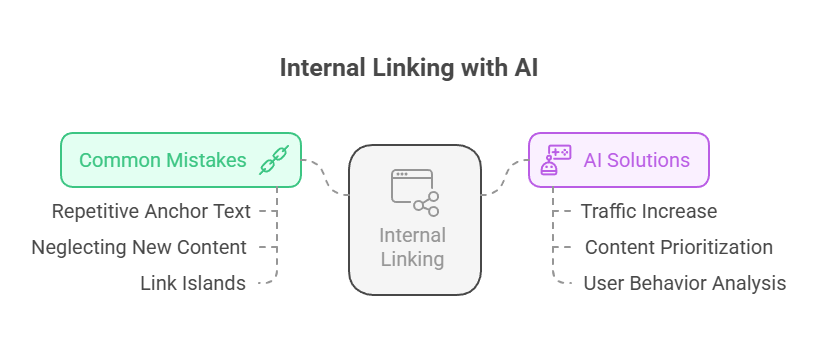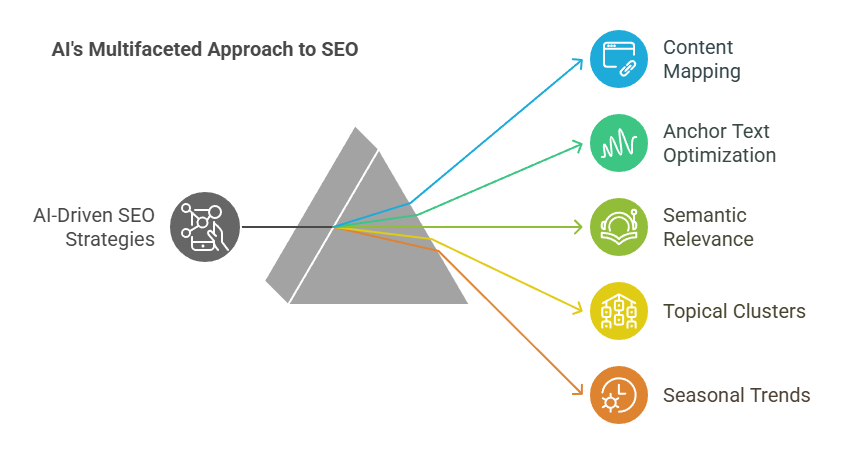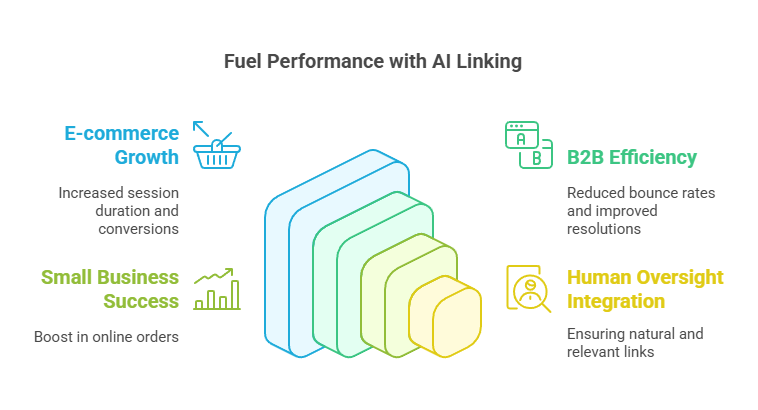Imagine your website is a bustling city. Internal links are the roads connecting neighborhoods—without them, visitors get lost, search engines struggle to navigate, and your best content stays hidden. Traditional internal linking strategies often feel like playing connect-the-dots blindfolded. But what if AI could map those connections perfectly? AI-assisted internal linking is transforming how websites guide users and search engines, creating pathways that boost traffic, improve SEO, and keep readers engaged. Let’s explore how tools like WriterX turn this tedious task into a traffic-driving superpower.
Why Internal Linking Matters (and Why Most Sites Do It Wrong)
Internal links do more than help visitors find related content—they show Google which pages matter most. But manually linking hundreds of posts? It’s like trying to untangle Christmas lights in July. Common mistakes include:
- Linking the same anchor text repeatedly (“click here” syndrome)
- Ignoring newer, high-value pages in favor of old posts
- Creating “link islands” where important pages get few connections
These issues can severely impact user experience and SEO performance. For example, when critical landing pages or cornerstone content lack sufficient internal links, they may not rank as well as they should. This leads to missed opportunities for conversions, engagement, and organic growth.
Enter AI. Platforms like WriterX analyze your entire site structure, content relationships, and user behavior to create smart links that actually make sense. For instance, a baking blog using AI-optimized linking saw a 40% traffic increase by connecting gluten-free recipes to relevant kitchen tool guides automatically. The AI didn’t just randomly suggest links—it identified patterns in user searches and page interactions to recommend meaningful connections.
Moreover, AI tools can prioritize new content without neglecting older posts. By ensuring every piece of content has its place within the broader ecosystem of your site, you avoid orphaned pages and maximize visibility across all your assets.

How AI Creates Smarter Connections
Content Mapping Magic
AI tools scan your content to understand relationships humans might miss. WriterX’s system might notice that your “Beginner Yoga Poses” post naturally connects to “Meditation for Stress Relief” and “Best Yoga Mats Under $50”—links a busy writer might overlook. This approach helped a fitness site improve SEO rankings by 55% in three months.
But it goes beyond simple keyword matching. Advanced algorithms consider semantic relevance, topical clusters, and even seasonal trends. For example, during winter months, an AI tool might prioritize linking to articles about indoor workouts or warm-up routines over outdoor activities. This dynamic adaptability ensures your internal linking strategy remains fresh and effective year-round.
Anchor Text Optimization
Instead of generic “read more” links, AI suggests context-rich anchor text. For a post about email marketing, it might create links like: “Learn how AI tools can streamline content workflows while maintaining quality.” This natural linking benefits SEO while keeping readers engaged.
AI also helps prevent over-optimization penalties by diversifying anchor text variations. Instead of repeatedly using exact-match keywords, the tool generates synonyms, long-tail phrases, and conversational snippets that align with modern search engine preferences. This balance between optimization and authenticity is crucial for sustainable SEO success.

Real Results: Case Studies That Prove the Power
A mid-sized e-commerce brand struggled with product pages that felt disconnected. After implementing WriterX’s automated linking system, they achieved:
- 22% longer average session duration
- 35% increase in cross-page navigation
- 18% boost in conversion rates for linked products
“It’s like our website suddenly learned how to recommend products like a helpful sales associate,” noted their content director.
In another case, a B2B software company used AI-driven internal linking to enhance their knowledge base. Previously, customers had trouble finding answers to specific questions due to poor interlinking. With AI assistance, they reduced bounce rates by 27% and increased support ticket resolutions by 15%, thanks to improved self-service options.
Even small businesses have seen significant gains. A local bakery implemented AI-generated links between recipe blogs and product pages, resulting in a 60% uptick in online orders. These examples underscore the versatility and scalability of AI-powered solutions for businesses of all sizes.
Balancing Automation with Human Insight
While AI handles the heavy lifting, human oversight ensures links feel natural. WriterX users often:
- Run the AI linking suggestions
- Review connections using the visual content map
- Add personal touches (“When I tested these running shoes…”)
This hybrid approach maintains brand voice while leveraging AI’s pattern recognition. A travel blogger using this method reported doubling her affiliate revenue through strategic gear recommendations.
Human input is particularly valuable for niche industries or highly specialized topics. While AI excels at identifying general patterns, human editors can refine suggestions to ensure accuracy and relevance. For example, a medical website might rely on AI to identify potential links but require expert review to confirm compliance with regulatory guidelines.

Future-Proofing Your Linking Strategy
As Google’s algorithms grow smarter, static linking strategies become obsolete. AI tools adapt by:
- Updating links when you publish new content
- Adjusting connections based on seasonal trends
- Identifying declining pages needing link boosts
Marketing agencies using bulk content tools save 15+ hours weekly on link maintenance—time better spent crafting campaigns.
Additionally, AI can predict future needs based on historical data. If certain types of content consistently perform well during specific times of the year, the tool can proactively suggest updates or new links to capitalize on recurring opportunities. This forward-thinking capability allows businesses to stay ahead of the curve rather than constantly reacting to algorithm changes.
Getting Started with AI-Assisted Linking
Implementing AI linking doesn’t require technical wizardry. With WriterX’s WordPress plugin, users can:
- Scan existing content for linking opportunities
- Set custom rules (e.g., link new posts to cornerstone content)
- Track link performance through built-in analytics
One SaaS company automated 80% of their linking process while maintaining full control over key pages—all through an interface their non-technical team could master.
To get started, begin with a comprehensive audit of your current internal linking structure. Identify gaps, such as underlinked cornerstone content or isolated clusters of pages. Then, use AI tools to fill those gaps systematically. Over time, monitor performance metrics like click-through rates, dwell time, and bounce rates to gauge effectiveness.
The future of internal linking isn’t about quantity—it’s about smart connections that serve both readers and search engines. Tools like WriterX handle the tedious work while you focus on creating content worth linking to. Ready to transform your website from a maze into a well-mapped metropolis? Explore WriterX’s linking features or test the free trial to see how AI can turn your internal links into traffic magnets.

